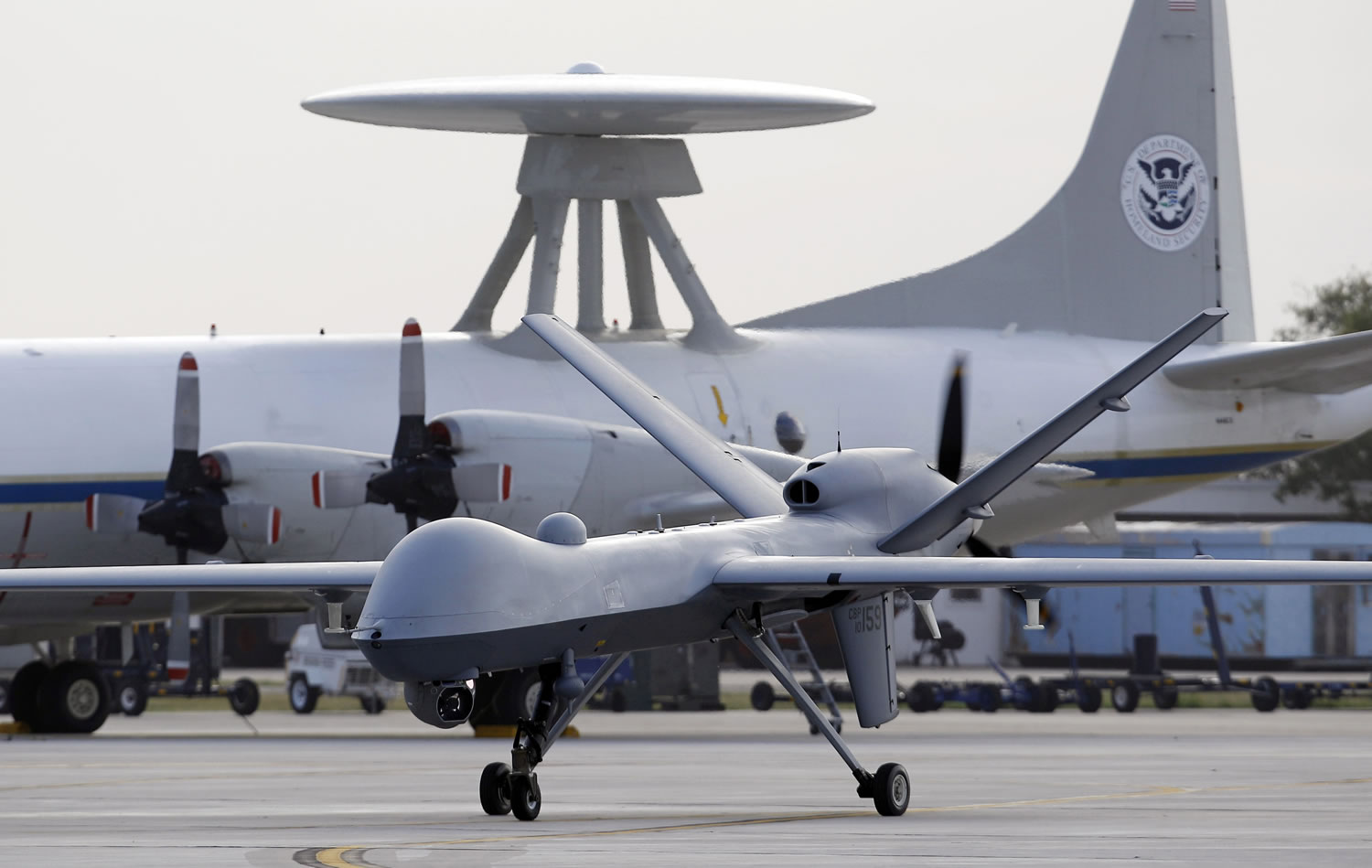LANGLEY AIR FORCE BASE, Va. — The Pentagon for the first time is considering scaling back the massive buildup of drones it has overseen in the past few years, both to save money and to adapt to changing security threats and an increased focus on Asia as the Afghanistan war winds down.
Air Force leaders are saying the military may already have enough unmanned aircraft systems to wage the wars of the future. And the Pentagon’s shift to Asia will require a new mix of drones and other aircraft because countries in that region are better able to detect unmanned versions and shoot them down.
If the Pentagon does slow the huge building and deployment program, which was ordered several years ago by then-Defense Secretary Robert Gates, it won’t affect the CIA drone strikes in Pakistan, Yemen and elsewhere against terror suspects. Those strikes were brought center stage last week during the confirmation hearing for White House counterterror chief John Brennan, President Barack Obama’s pick to lead the CIA.
Gen. Mike Hostage, commander of Air Combat Command, said senior leaders are analyzing the military’s drone needs and discussions are beginning. But he said the current number patrolling the skies overseas may already be more than the service can afford to maintain.
Overall, Pentagon spending on unmanned aircraft has jumped from $284 million in 2000 to nearly $4 billion in the past fiscal year, while the number of drones owned by the Pentagon has rocketed from less than 200 in 2002 to at least 7,500 now. The bulk of those drones are small, shoulder-launched Ravens owned by the Army.
The discussions may trigger heated debate because drones have become so important to the military. They can provide 24-hour patrols over hot spots, gather intelligence by pulling in millions of terabytes of data and hours of video feeds, and they can also launch precisely targeted airstrikes without putting a U.S. pilot at risk.
The analysis began before Brennan’s confirmation hearings, where he was questioned sharply about the CIA’s use of drones to kill terror suspects, including American citizens overseas. The CIA has its own fleet of drones that it uses on its counterterror missions, and any decision to stop building drones would be unlikely to have any effect on that program.
The Air Force discussions are focused more on whether the military’s drone fleet is the right size and composition for future conflicts.
There has been a seemingly insatiable appetite within the military for the unmanned hunter/killers, particularly among top combat commanders around the world who have been clamoring for the drones but have seen most resources go to the wars in Iraq and Afghanistan.
“We are trying to do the analysis and engage in the discussion to say at some point the downturn in operations and the upsurge in capabilities has got to meet,” Hostage said.
Right now, Predator and Reaper drones that pilots fly remotely from thousands of miles away are completing 59 24-hour combat air patrols a day, mostly in Afghanistan, Pakistan and areas around Yemen and the Africa coast. The standing order is for the Air Force to increase that number of air patrols to 65 a day by May 2014, although officials say that is an arbitrary number not based on an analysis of future combat requirements.
The staffing demands for that increase have put a strain on the Air Force, as they would require nearly 1,700 drone pilots and 1,200 sensor operators. Currently there are fewer than 1,400 pilots and about 950 sensor operators.



